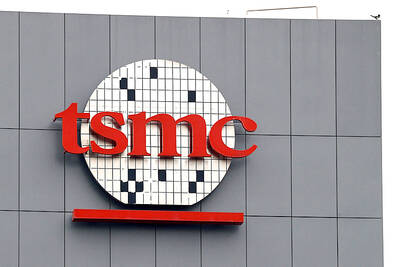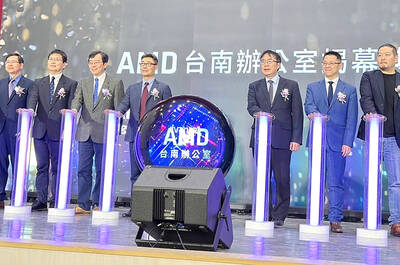The consumer price index (CPI) climbed at the fastest rate in four months to 2.42 percent last month, as a result of higher food prices along with increasing medical, rental and dining out costs, the Directorate-General of Budget, Accounting and Statistics (DGBAS) said yesterday.
The inflationary gauge again rose above the central bank’s 2 percent target and outpaced May’s 2.23 percent increase after briefly returning to the bank’s comfort zone in April. During the second quarter, CPI increased 2.2 percent, slightly lower than the 2.25 percent estimated by the DGBAS.
Core CPI, excluding volatile items such as food and energy prices, rose 1.83 percent last month from a year earlier.

Photo: CNA
“A total of 273 among 368 items monitored by the agency showed year-over-year upticks last month, with some having significant price hikes, such as lychees rising 57 percent. Breakfasts, Chinese medicinal materials and accommodation costs also showed an increase. This is why consumers have felt deeply higher living costs lately,” DGBAS official Tsao Chih-hung (曹志弘) told a news conference in Taipei.
Rent costs rose 2.59 percent last month from a year earlier, the steepest increase in about 28 years, Tsao said.
Accommodation costs, including rent, home repair costs and electricity charges, increased 2.27 percent from a year earlier, the DGBAS said.
Dining out costs jumped 2.78 percent year-over-year, although they retreated slightly from the historical high of 2.81 percent in May.
The cost of dining out is increasing more slowly, Tsao said.
Last quarter, dining out costs rose 2.85 percent year-over-year, coming down from their peak in the second quarter of last year, when they soared 4.48 percent, Tsao said.
Food costs surged 4.16 percent year-on-year last month, with fruit prices increasing most, by 22.6 percent, as heavy rain reduced harvests of lychees and mangoes, the agency said.
An annual decline of 15.52 percent in egg prices last month helped slow down the increase of food prices, the agency said.
Healthcare was another major factor on the CPI reading, rising 3.78 percent from a year earlier, as hospitals and clinics hiked registration fees, and health insurance authorities increased copayment and emergency treatment charges, it said.
Costs for entertainment and education increased 1.67 percent last month, affected by strong demand for overseas travel, and fee increases at cram schools and other education providers, the DGBAS said.
In the first half of the year, the CPI increased 2.27 percent from a year ago, with core CPI rising 2.02 percent. However, the prices of 17 major living items tracked by the Cabinet showed a decline of 0.14 percent from a year ago. Among measured items, egg prices dropped most, at an annual rate of 18.17 percent, due to an oversupply, the agency said.
Milk and tissue paper prices also dropped by 1.99 percent and 2.45 percent respectively.
The producer price index (PPI), which measures the price movements of goods from a seller’s perspective, rose 3.54 percent year-on-year last month, as raw materials and personal computers became more expensive, the agency said.
In the first half of the year, the PPI climbed 1.37 percent from a year earlier, DGBAS data showed.

Anna Bhobho, a 31-year-old housewife from rural Zimbabwe, was once a silent observer in her home, excluded from financial and family decisionmaking in the deeply patriarchal society. Today, she is a driver of change in her village, thanks to an electric tricycle she owns. In many parts of rural sub-Saharan Africa, women have long been excluded from mainstream economic activities such as operating public transportation. However, three-wheelers powered by green energy are reversing that trend, offering financial opportunities and a newfound sense of importance. “My husband now looks up to me to take care of a large chunk of expenses,

SECTOR LEADER: TSMC can increase capacity by as much as 20 percent or more in the advanced node part of the foundry market by 2030, an analyst said Taiwan Semiconductor Manufacturing Co (TSMC, 台積電) is expected to lead its peers in the advanced 2-nanometer process technology, despite competition from Samsung Electronics Co and Intel Corp, TrendForce Corp analyst Joanne Chiao (喬安) said. TSMC’s sophisticated products and its large production scale are expected to allow the company to continue dominating the global 2-nanometer process market this year, Chiao said. The world’s largest contract chipmaker is scheduled to begin mass production of chips made on the 2-nanometer process in its Hsinchu fab in the second half of this year. It would also hold a ceremony on Monday next week to

TECH CLUSTER: The US company’s new office is in the Shalun Smart Green Energy Science City, a new AI industry base and cybersecurity hub in southern Taiwan US chip designer Advanced Micro Devices Inc (AMD) yesterday launched an office in Tainan’s Gueiren District (歸仁), marking a significant milestone in the development of southern Taiwan’s artificial intelligence (AI) industry, the Tainan City Government said in a statement. AMD Taiwan general manager Vincent Chern (陳民皓) presided over the opening ceremony for the company’s new office at the Shalun Smart Green Energy Science City (沙崙智慧綠能科學城), a new AI industry base and cybersecurity hub in southern Taiwan. Facilities in the new office include an information processing center, and a research and development (R&D) center, the Tainan Economic Development Bureau said. The Ministry

State-run CPC Corp, Taiwan (CPC, 台灣中油) yesterday signed a letter of intent with Alaska Gasline Development Corp (AGDC), expressing an interest to buy liquefied natural gas (LNG) and invest in the latter’s Alaska LNG project, the Ministry of Economic Affairs said in a statement. Under the agreement, CPC is to participate in the project’s upstream gas investment to secure stable energy resources for Taiwan, the ministry said. The Alaska LNG project is jointly promoted by AGDC and major developer Glenfarne Group LLC, as Alaska plans to export up to 20 million tonnes of LNG annually from 2031. It involves constructing an 1,290km